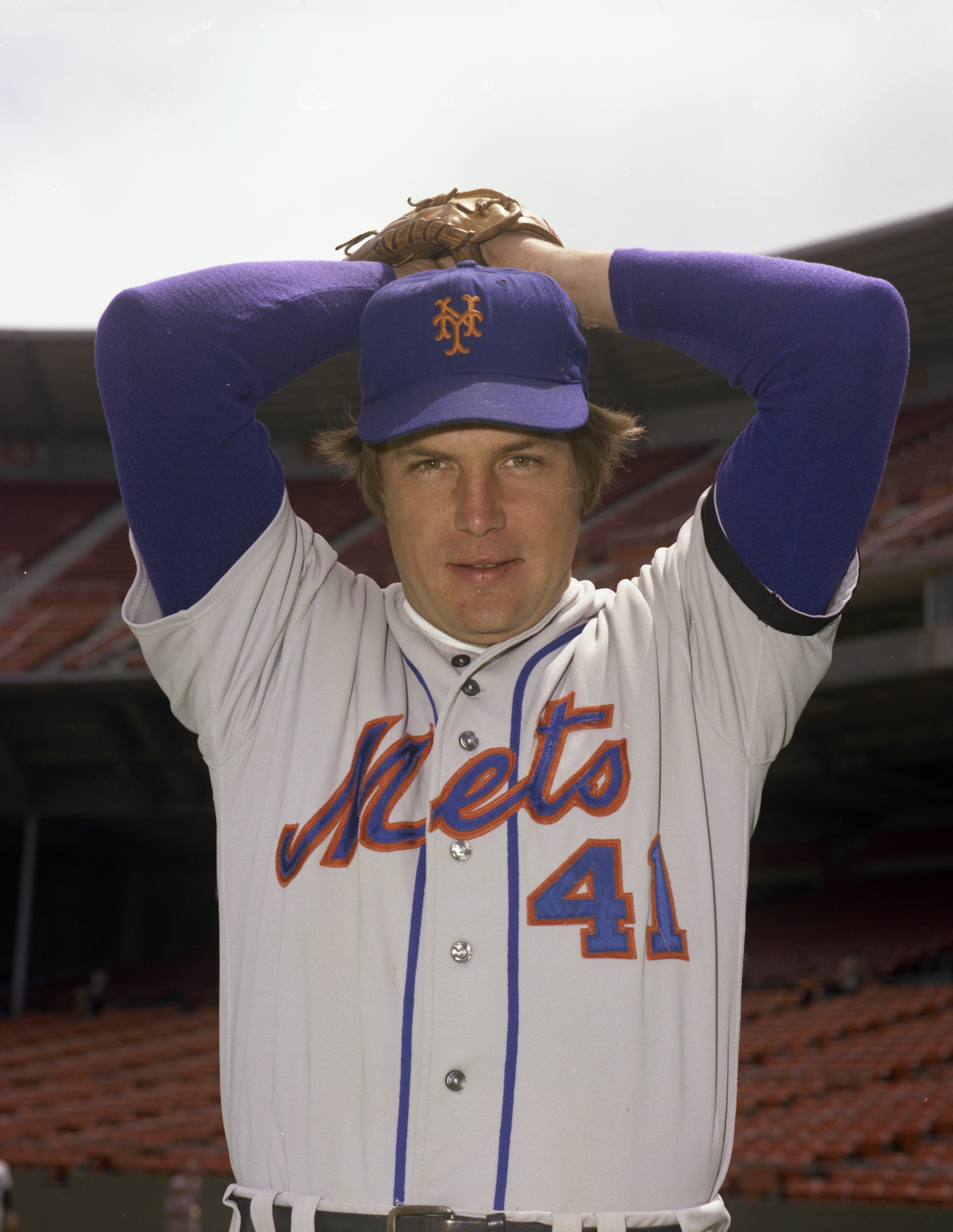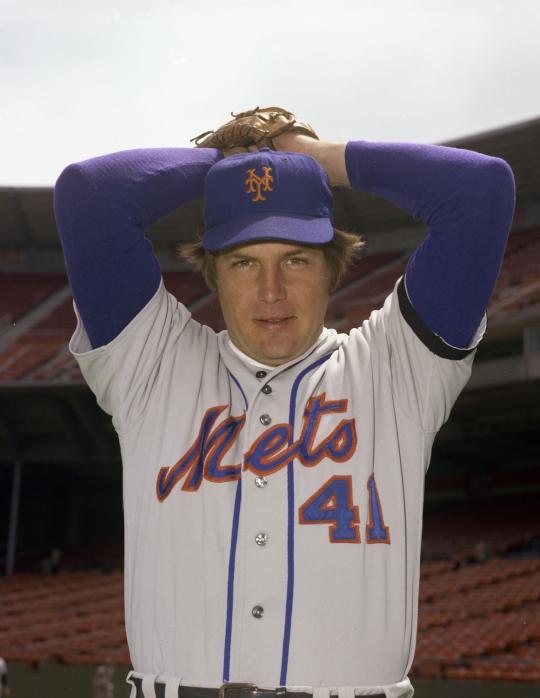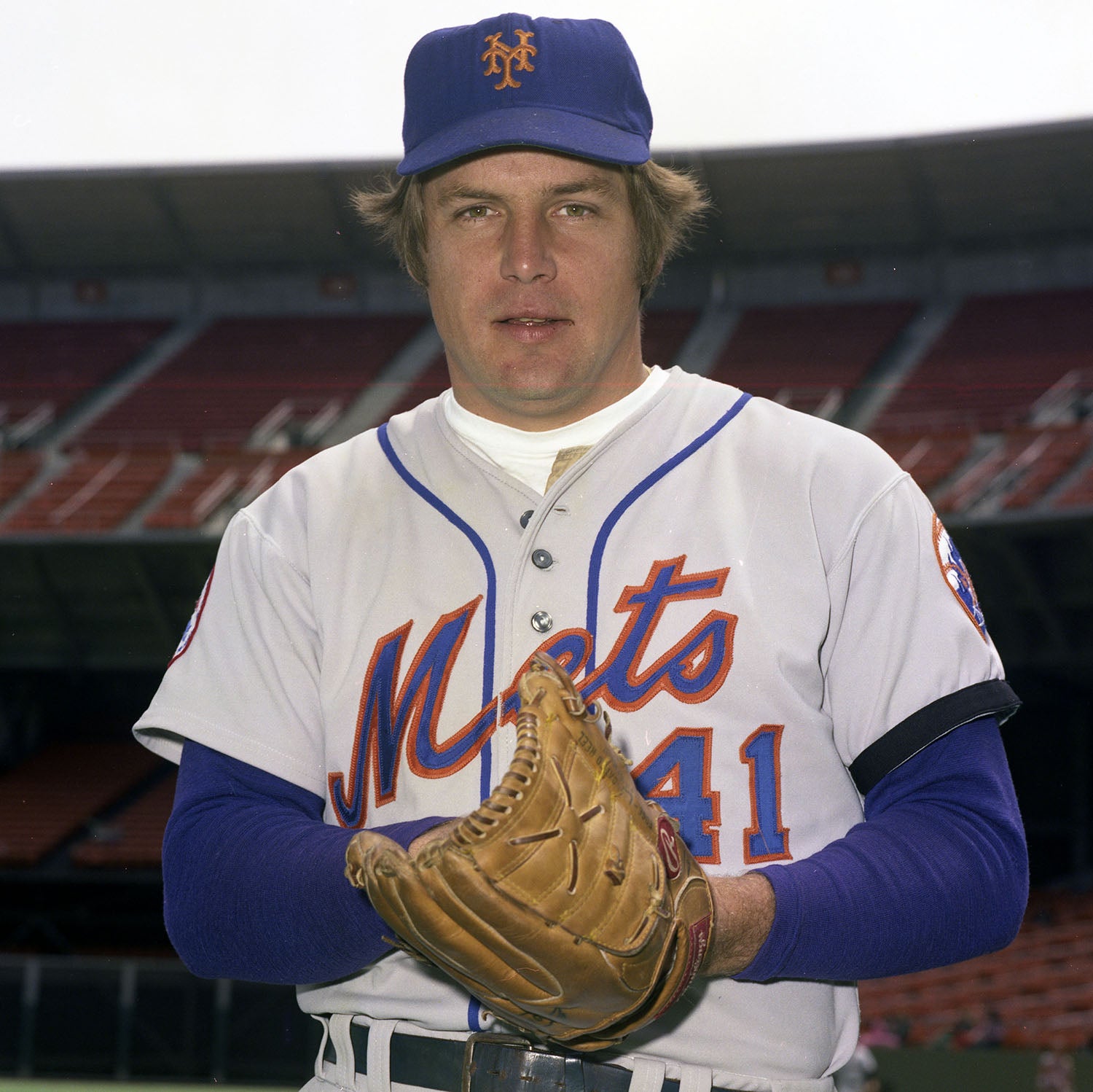- Home
- Our Stories
- Tom Seaver Nearly Perfect
Tom Seaver Nearly Perfect
He was two outs from perfection.
When Chicago Cubs’ rookie Jimmy Qualls stepped to the plate to face Mets’ ace Tom Seaver with one out in the top of the ninth inning on that day in 1969, the 50,709 fans at Shea Stadium were on their feet in anticipation of the Mets’ first perfect game in franchise history.
Instead, Qualls singled to left-center, spoiling Seaver’s chance at perfection. After retiring Willie Smith and Don Kessinger for the final two outs of the game, Seaver’s teammates gathered on the pitcher’s mound to congratulate their ace on his one-hitter on July 9, 1969.
“Tom always called that his ‘Imperfect Game’,” Mets’ catcher Jerry Grote told The Hartford Courant in 1985.
For the 24-year-old Seaver, the gem against the Cubs was the first of five one-hitters that he would throw for the Mets, and it was the closest the future Hall of Famer would come to a perfect game. It would have been just the eighth perfect game recorded in Major League Baseball history.
Mets Gear
Represent the all-time greats and know your purchase plays a part in preserving baseball history.
“It’s been my philosophy, ‘If it happens, it happens,” Seaver said in a Chicago Tribune article in 1978.
Nine years after Qualls’ single, Seaver’s quest for a no-hitter finally ended. On June 16, 1978, Seaver accomplished the feat while pitching for the Cincinnati Reds, recording the first Reds’ no-hitter since Jim Maloney no-hit the Houston Astros on April 30, 1969.
“I always felt that if I ever pitched a no-hitter, it would come on a night like this, on a night when I wasn’t overpowering,” Seaver said after the game.
The Reds beat the Cardinals 4-0 on the night that Seaver threw his no-hitter, but St. Louis drew three walks off of the right-hander to erase his shot at a perfect game.
Seaver’s no-hitter was the first and only of his career, but his near perfect game against the Cubs was an arguably more important milestone for the three-time Cy Young award winner. Seaver tossed the one-hitter in just his third season in MLB en route to his third All-Star appearance and his first Cy Young award.
The gem came in the middle of one of Seaver’s best seasons, as he won a career-high 25 games to go along with his 2.21 ERA. And it also served as a springboard for the Mets, who overtook the Cubs later that summer en route to the National League East title and an amazing World Series victory.
Seaver would go on to pitch for the Reds, Chicago White Sox and Boston Red Sox before retiring after the 1986 season.
The 12-time All-Star led the National League in ERA and wins three times, and in strikeouts five times.
Two years after he left baseball, the Mets retired Seaver’s No. 41 at Shea Stadium. In 1992, Seaver was inducted to the Hall of Fame in his first year on the ballot. He ended his 20-year career with a 311-205 overall record and a 2.86 ERA while recording 3,640 strikeouts, ranking sixth all-time. “He always figured out some way to beat you,” Tim McCarver told Daily Sports News in 1988. “He had overwhelming confidence on the mound. He was in charge out there.”
Kristen Gowdy was the 2014 public relations intern in the Frank and Peggy Steele Internship Program at the National Baseball Hall of Fame and Museum
Related Stories

Tom Seaver Announces His Retirement

Tom Seaver strikes out 10 straight Padres

Tom Seaver Announces His Retirement






